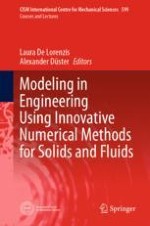
2020 | OriginalPaper | Buchkapitel
Discrete Element Methods: Basics and Applications in Engineering
verfasst von : Peter Wriggers, B. Avci
Erschienen in: Modeling in Engineering Using Innovative Numerical Methods for Solids and Fluids
Aktivieren Sie unsere intelligente Suche, um passende Fachinhalte oder Patente zu finden.
Wählen Sie Textabschnitte aus um mit Künstlicher Intelligenz passenden Patente zu finden. powered by
Markieren Sie Textabschnitte, um KI-gestützt weitere passende Inhalte zu finden. powered by